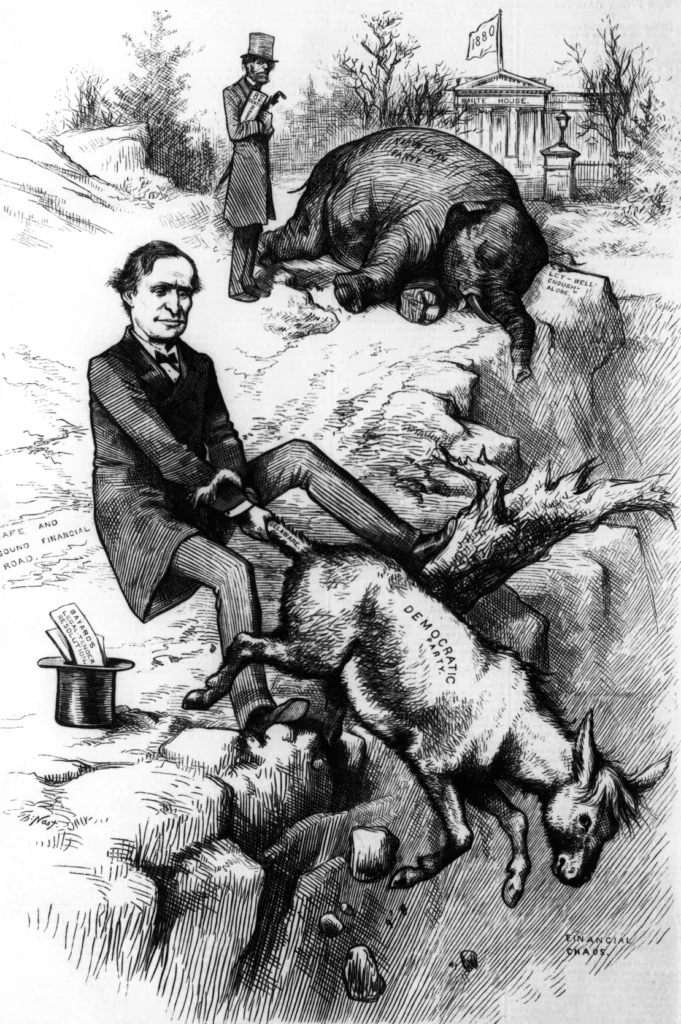
Let’s address the donkey in the room, what is the Democratic Party?
Photo from getarchive.net, photo in the public domain
Savannah Williamson, Managing Editor
Every four years in the United States, the American people get the chance to vote for a president. There are campaigns and primaries and the most frequently asked question is which party are you supporting?
In the United States, there are two main parties that try to win the bid for the presidency. They are the Republican party and the Democratic party. What do these parties do, what are their values and what’s the difference between the two?
In this article, we’re focusing on the Democratic party. (If you wish to know about the Republican party as well, look for our other article, “Let’s address the elephant in the room”.)
Let’s dive in and take a good look. How long has the Democratic party been around, and what do they do?
The Democratic National Committee, or DNC, was created during the Democratic National Convention of 1848, and is governed by its Charter and Bylaws. For 171 years, it’s been responsible for governing the Democratic Party and is the oldest continuing party committee in the United States.
According to History.com, The Democratic Party is one of the two major political parties in the United States and the nation’s oldest existing political party. After the Civil War, the party dominated in the South due to its opposition to civil and political rights for African Americans.
In the highly controversial presidential election of 1824, four Democratic-Republican candidates ran against each other. Andrew Jackson won the popular vote and 99 electoral votes however, he did not win the presidency; John Quincy Adams did.
In response, Martin van Buren helped build a new political organization called the Democratic party. By the 1840s, Democrats and Whigs (the Whig party would eventually combine with other parties to create the Republican party) were both national parties, with supporters from various regions of the country and dominated the U.S. political system.
History.com states that after a major shift in the 20th century, today’s Democrats became known for their association with a strong federal government and support for minority, women’s and labor rights, environmental protection and progressive reforms.
According to professor of political science, Jong Eun Lee, “The Democratic Party is one of the two major parties in the United States. In current US politics, the Democratic Party is considered to be more “liberal” or “progressive” than its main rival, the Republican Party.”
Every four years, the Democratic party gets together to update their party platform. The most current platform supports protecting and helping Americans recover from the COVID-19 pandemic, building the economy, having affordable healthcare, reforming the criminal justice system, combating the climate crisis, creating a newer immigration system, providing education in every zip code and renewing American leadership. (You can read their platform here.)
The Democratic Party’s political ideology and goals have changed over time. In general though, the Democratic Party proclaims that it is “The Party of People” that represents the best interests of the common, average citizen.
So where does the Democratic party stand on economic and social issues? Lee explains.
“On economic issues, the Democratic Party is generally (though not always) in favor of the government providing welfare programs and services to citizens. The Democratic Party is also more likely to support business and market regulations related to environmental protections. This is because the Democratic Party’s belief is that government regulations (and taxes) can achieve the “common good” for everyone in society.”
This means that economically, the Democratic party supports giving welfare to the common American people and regulations that protect the environment. On social issues, the Democratic Party proclaims its ideals as a “culturally diverse and tolerant society”.
“The Democratic Party is more likely to support government programs to assist minorities, arguing that these programs (such as affirmative action) will help them compete more fairly against White Americans,” said Lee.
Interestingly enough, while the Democratic Party supports more economic regulations, they are also more opposed to regulations on social behaviors.
“Many Democrats support the legalization of abortion, assisted suicide, and the use of marijuana, advocating that these decisions are an individual’s free choice,” said Lee.
However, there are two exceptions. Gun regulation, where guns are regarded as public safety issues, and government measures that build support for policies to prevent what Democrats consider as intolerance. This can cause conflict with American people and communities that uphold more conservative values.
So who is running for the Presidential bid for the Democratic party? Currently, there are three frontrunners. We have Marianne Williamson, Dean Phillips and the current president, Joe Biden.
Biden has won the most recent primary out of New Hampshire. The next primary will be out of South Carolina on February 3, with another primary three days later in Nevada.
Biden is also the only Democratic candidate that has declared a running mate. His running mate is the current vice president, Kamala Harris and together they make up the Biden-Harris Democratic ticket.
If you want to dive deeper into everything that has happened in the Democratic party within the last four years, and check out when the primaries are, check that out here. If you want to know more information about what a presidential primary is, you can check that out here.
Editor’s note: What about the donkey symbol that became the face of the Democratic party? Funnily enough, it was from a cartoon in 1870 drawn by Thomas Nast that had both the donkey and the elephant as representatives of both the Democratic and Republican parties. They stuck, and they were adopted by both parties soon after.
